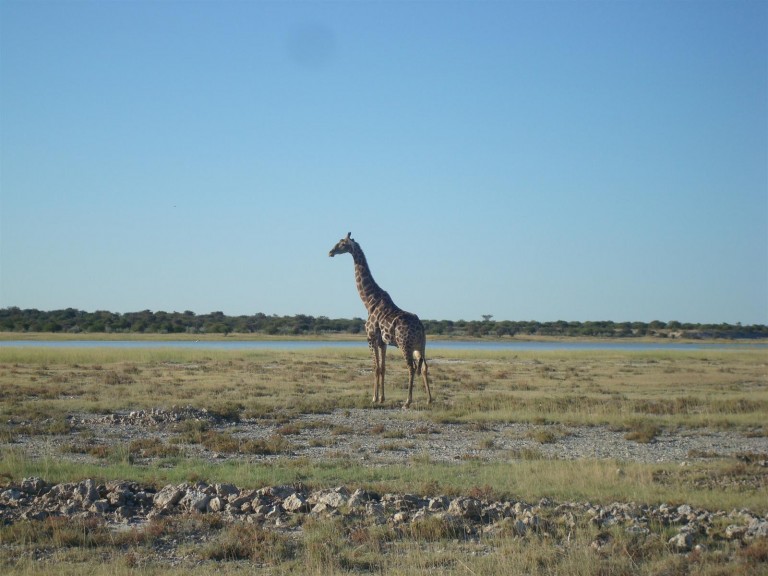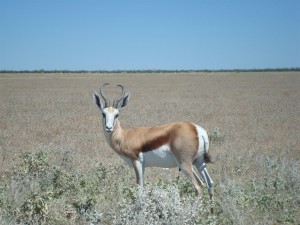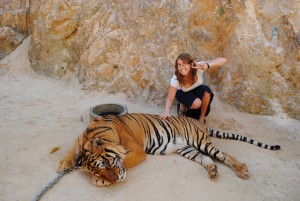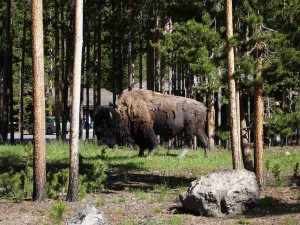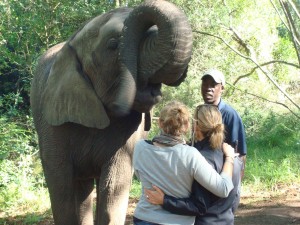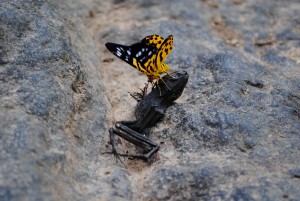Living on a tropical island with no indigenous elephants, in a country with many indigenous elephants, I see a lot of tourists on elephant back. It’s like, part of my commute. Having done one these types of tours myself, I know what lots of guides insist. That the elephant hide is thick. It doesn’t feel the poke of the stick jabbed into the back of its neck. It’s strong and can support your weight. It’s well fed. What is not part of the pitch, is that baby elephants are often taken from their mothers, beaten into passivity, chained for much of the time they are not providing transport, and deprived of necessary social interaction. That information would harsh an otherwise super mellow afternoon. Because riding an elephant is really fun.
Wildlife has and always will have an enormous and powerful magnetism over travelers. What’s more exciting than witnessing the natural behaviors of majestic beasts in far off lands just like Jane Goodall and Diane Fossey? With the pervasive influence of social media, the desire, or even pressure — in the case of some professional photographers and bloggers — to get that incredible, once-in-a-lifetime shot or selfie can induce travelers to behave irresponsibly towards the less privileged, natural inhabitants. This, coupled with the pressure from imminent climate disasters to see these creatures in their endemic environs before they disappear forever, adds to the urgency to see that polar bear while we still can.
So how can we, as tourists, share in the beauty of wildlife without trampling on it? I open this discussion as someone who has ridden an elephant and pet a tiger. I have educated myself since then. I’ve scuba dived, gone on safari, and visited plenty of national parks. I would like to share, without judgment, what I have learned about the impact of our visits and actions on the local fauna and ecosystems. Here a few red flags to look for and some tips to remain ethical while appreciating local wildlife.
Red Flags
1. The animal is not in its natural habitat
• It’s in captivity – There’s lots of money to be made off animals, and unless it’s part of a conservation project, they have no reason to be in a cage, on display.
• It’s near its habitat, but not in it – This is especially true for elephants and tigers. Elephants are put through torturous beatings as infants to keep them docile, while tigers are drugged to keep them so. The intermittent maulings of tourists at tiger temples should clue us in that they don’t respond well to this environment.
For more information:
<a “rel=nofollow” href=”http://www.humanesociety.org/issues/circuses_entertainment/facts/elephant_rides_060109.html?referrer=https://www.google.co.th/” target=”_blank”>http://www.humanesociety.org/issues/circuses_entertainment/facts/elephant_rides_060109.html?referrer=https://www.google.co.th/
<a “rel=nofollow” href=”http://www.onegreenplanet.org/animalsandnature/exposed-thailands-tiger-kingdom-sanctuary-or-sham/” target=”_blank”>http://www.onegreenplanet.org/animalsandnature/exposed-thailands-tiger-kingdom-sanctuary-or-sham/
• You are in a bar – This may seem like a no brainer, but in southeast Asia, small primate species are kept in captivity and brought around to bars to charge tourists a small fee.
2. You are asked to pay for your photo with it
This reiterates some of the above points. Any time you are asked to take a photo with a “wild” animal for a fee, you can be sure that animal is kept away from its natural habitat to generate revenue. Without knowing the living conditions the animal truly experiences, you cannot be sure that you are not perpetuating an abusive situation.
3. You need to change their environment to attract their attention
One of the most common examples of this is chumming for sharks when cage diving, or scouting for orca whales. In the parts of the western United States, food is left out to attract bears while spectators wait safely in their cars. Not only does this cause the animal to associate food with humans, something that is dangerous for both the animal and humans, it leads the animals out of their natural habitats: sharks to beaches and bears to roads. I know that opportunities to see these animals in the “wild” are scarce, but that is the way it should be. Interaction with them should not be easy or commonplace. When it becomes commonplace, it alters the relationship they have with their environment, which is no longer natural.
4. Local animal products are made into merchandise
The way that some of these products are advertized and sold out in the open, it’s understandable not to know that they are made from endangered species. I bought some beautiful abalone jewelry in South Africa without really knowing that abalone was an animal, let alone on the endangered species list. Most people these days are savvy enough to stay away from ivory, but abalone or sea turtle shell are less vocally protected.
For more information visit:
<a “rel=nofollow” href=”http://www.worldwildlife.org/threats/illegal-wildlife-trade” target=”_blank”>http://www.worldwildlife.org/threats/illegal-wildlife-trade
And be sure to inquire about the “mystical” ingredients claiming to have medicinal powders at the apothecary… Some of these virility powders (I know ladies, probably not on your list of souvenir must-haves, but I’ve seen people here in Thailand purchase them as gag gifts) contain bear bile that is extracted from raising bears’ stress hormones. Needless to say, these bears live not only in captivity, but in purposefully traumatic conditions.
For more information read:
<a “rel=nofollow” href=”https://www.animalsasia.org/intl/media/news/news-archive/five-things-you-need-to-know-about-bear-bile-farming.html” target=”_blank”>https://www.animalsasia.org/intl/media/news/news-archive/five-things-you-need-to-know-about-bear-bile-farming.html
So what can we do to have ethical and positive interactions with our favorite animals?
Tips
1. Do a little research before becoming a wildlife spectator
This is not meant to be preachy. I wish I had done my research for plenty of past trips, and now I do. Learn a bit about the natural habitat and behaviors of the species you wish to visit, and your experience with them will be that much more positive.
2. Leave your pets at home
I love cats and dogs and there’s nothing that can improve a hike more than a dog; however, they can bark and chase and otherwise disturb the local species.
3. Respect rules at national parks
The United States National Park system is great about posting tips and guidelines to help you have a respectful experience while hiking or photographing wildlife. They have the best interests of the animal populations at the forefront of their efforts while also providing visitors with an educational and user-friendly experience. Even with large and intimidating animals, if you follow the rules, you’ll be safe and get some great photos!
4. Visit wildlife sanctuaries
Instead of zoos, visit and contribute to rescue and conservation efforts. They are usually more educational and often offer close up or even hands on experiences with the animals. They are also a great way to teach children about how to positively interact with their favorite animals.
5. Don’t overlook the little guys
I often find myself missing out on the incredible behaviors of the smaller inhabitants of nature in an effort to locate a glimpse of the Big Five or the glamorous species on the cover of my guidebook. But nature is a delicately balanced and nuanced ecosystem that has fascinating activity at all levels. Now I love to sit in one spot and observe all the little goings-on that make life…go on.
What are tips or red flags that you have found to be helpful when viewing wildlife?
Find this article interesting or helpful? Like or share it on facebook.
